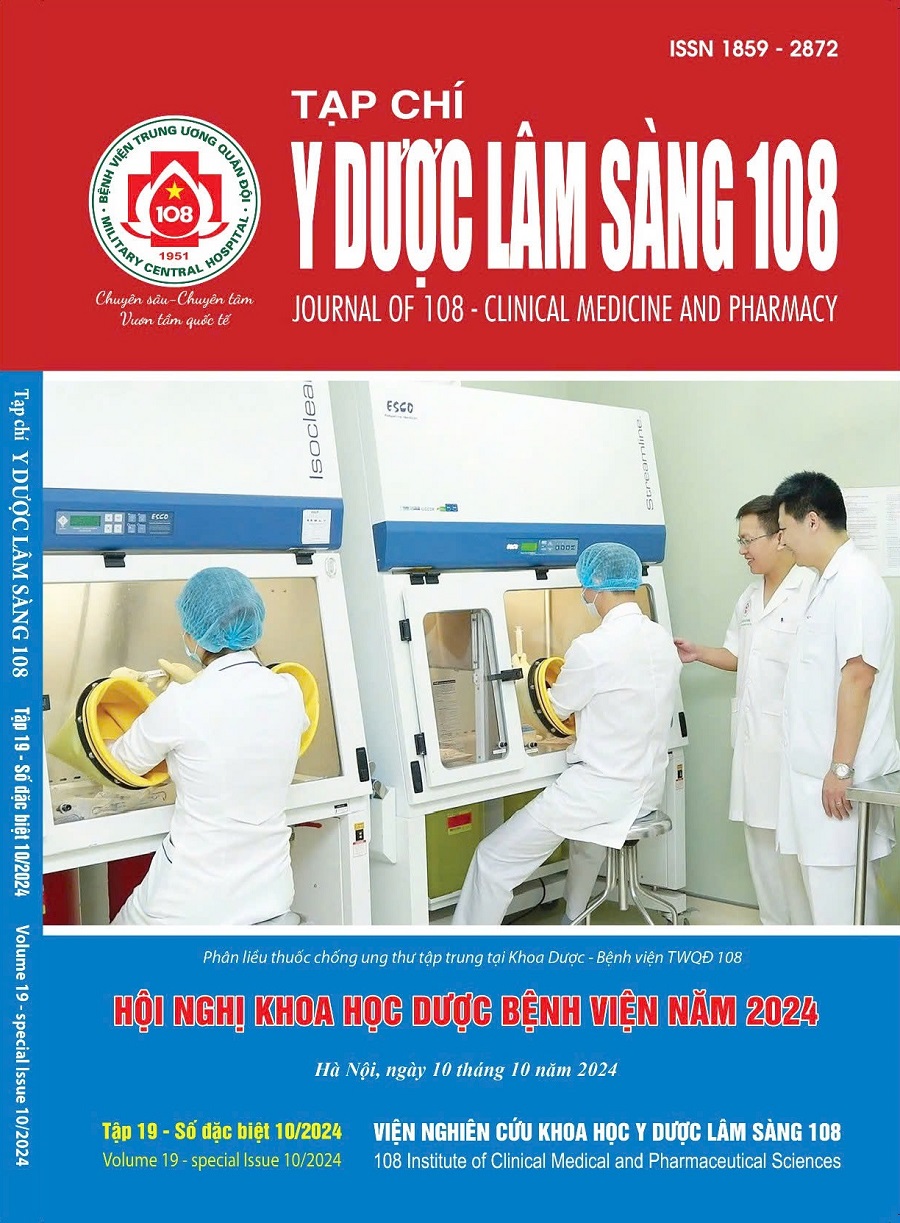Survey of antibiotic - related problems at a Medical Ward, Lam Dong II General Hospital
Main Article Content
Keywords
Abstract
Objective: To investigate prevalence, types and severity of antibiotic - related problems, and factors related to such problems at a Medical Ward, Lam Dong II General Hospital. Subject and method: A descriptive cross-sectional study on patients treated with antibiotics in the medical ward, from January 1, 2019 to June 30, 2019. DRPs were determined and classified based on the instruction of Pharmaceutical Care Network Europe (2019). The severity of DRP was evaluated by an expert’s panel using Dean & Barber’s approach. DRP related factors were identified using logistic regression model. Result: A total of 335 patients was included in the study (mean age was 69.3 ± 14.6). The majority of patients were male (57.9%). The most common diagnosis was respiratory tract infection (62.4%). Penicillins and fluoroquinolones were the most commonly prescribed antibiotics. About 60% of patients have experienced at least 1 DRP, especially DRP related to antibiotic dosing. The majority of DRPs were considered having moderate clinical relevance. Male patients or patients with creatinine clearance of > 50mL/min were less likely to experience a DRP, whereas patients indicated ≥ 3 antibiotics were more likely to suffer a DRP. Conclusion: Antibiotic-related problems were quite common and mainly due to inappropriate dose. Dose adjustments (according to renal function, especially in patients with creatinine clearance of ≤ 50mL/min) can help improve the appropriateness of antibiotic use.
Article Details
References
2. Dean BS, Barber ND (1999) A validated, reliable method of scoring the severity of medication errors. American Journal of Health-System Pharmacy 56(1): 57-62.
3. Europe Pharmaceutical Care Network (2019) PCNE Classification for Drug-Related Problems V9.00.
4. Hale CM, Steele JM, Seabury RW, Miller CD (2017) Characterization of drug-related problems occurring in patients receiving outpatient antimicrobial therapy. Journal of pharmacy practice 30(6): 600-605.
5. Iftikhar S, Sarwar MR, Saqib A, Sarfraz M (2018) Causality and preventability assessment of adverse drug reactions and adverse drug events of antibiotics among hospitalized patients: A multicenter, cross-sectional study in Lahore, Pakistan. PloS one 13(6): 0199456.
6. Peterson C, Gustafsson M (2017) Characterisation of drug-related problems and associated factors at a clinical pharmacist service-naive Hospital in Northern Sweden. Drugs-real world outcomes 4(2): 97-107.
7. Antibiotic Prescribing and Use in Hospitals and Long-term Care, JAC-Antimicrobial Resistance 1(2), 2019, lz004, https://doi.org/10.1093/jacamr/dlz004.
8. Cockcroft DW & Gault H (1976) Prediction of creatinine clearance from serum creatinine. Nephron 16: 31-41.
9. Yadesa TM, Gudina EK, Angamo MT (2015) Antimicrobial use-related problems and predictors among hospitalized medical in-patients in Southwest Ethiopia: Prospective observational study. PloS one 10(12): 0138385.
10. Zhu JXG, Nash DM, McArthur E, Farag A, Garg AX, Jain AK (2019) Nephrology comanagement and the quality of antibiotic prescribing in primary care for patients with chronic kidney disease: S retrospective cross-sectional study. Nephrology Dialysis Transplantation 34(4): 642-649.
 ISSN: 1859 - 2872
ISSN: 1859 - 2872
